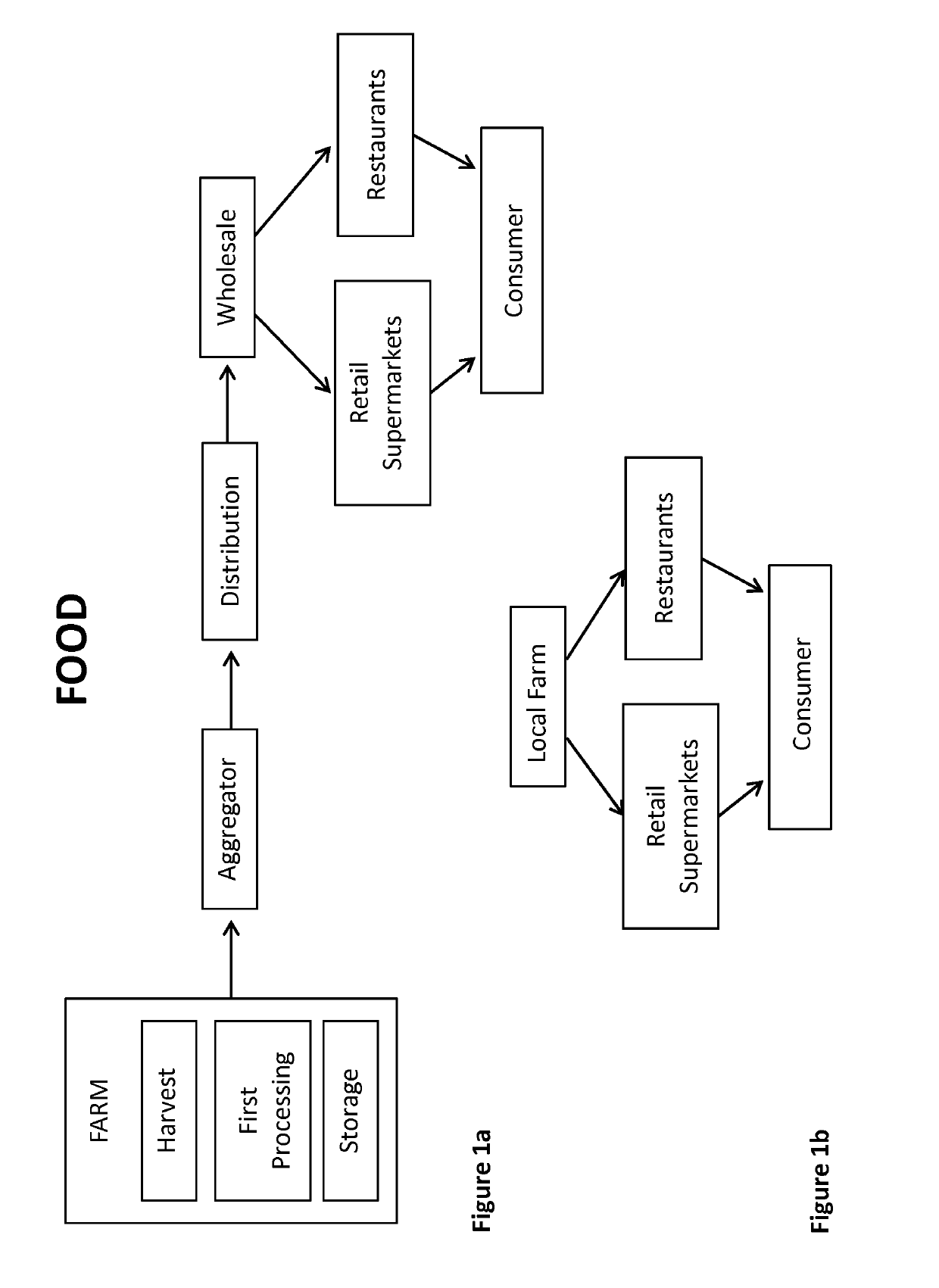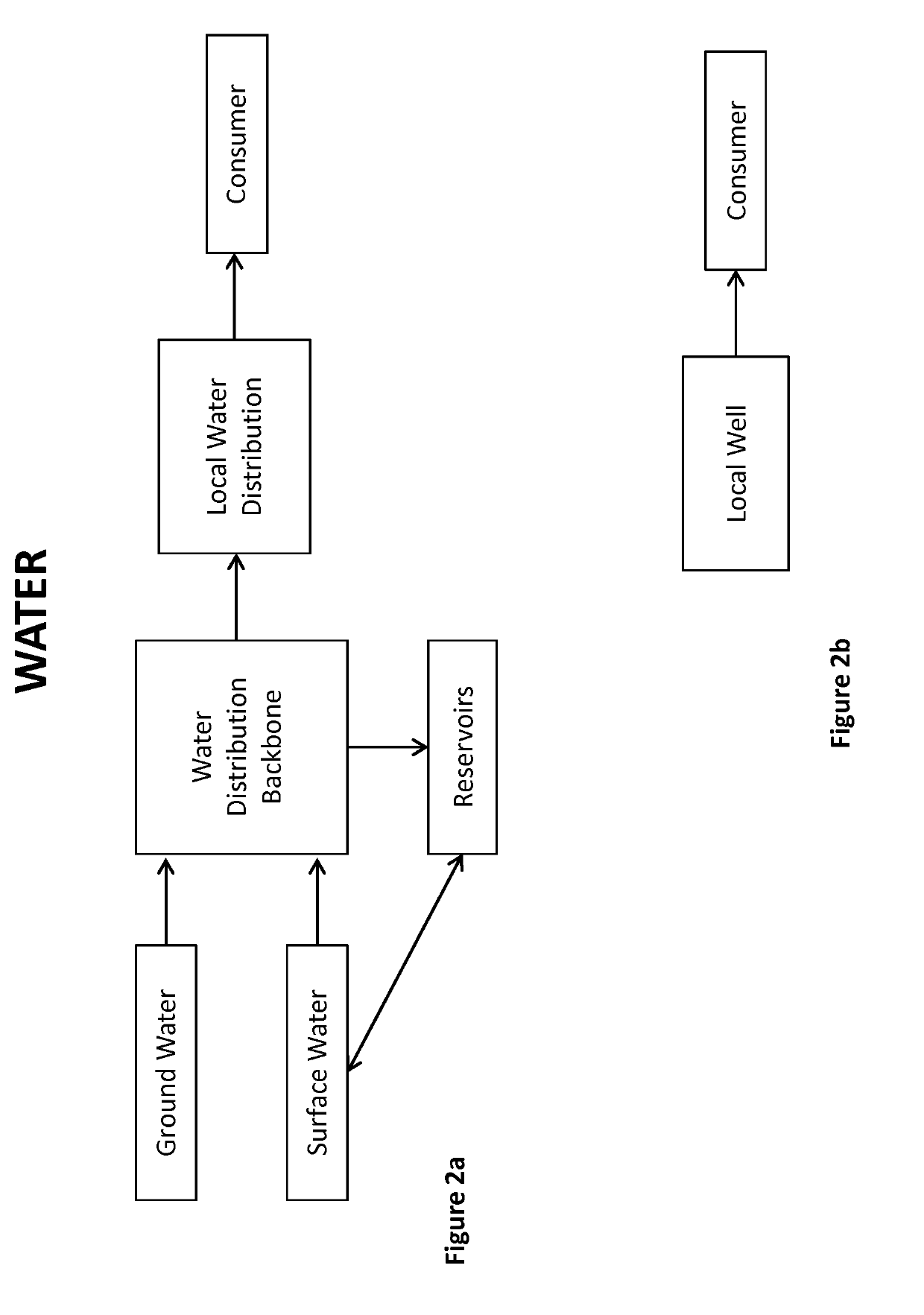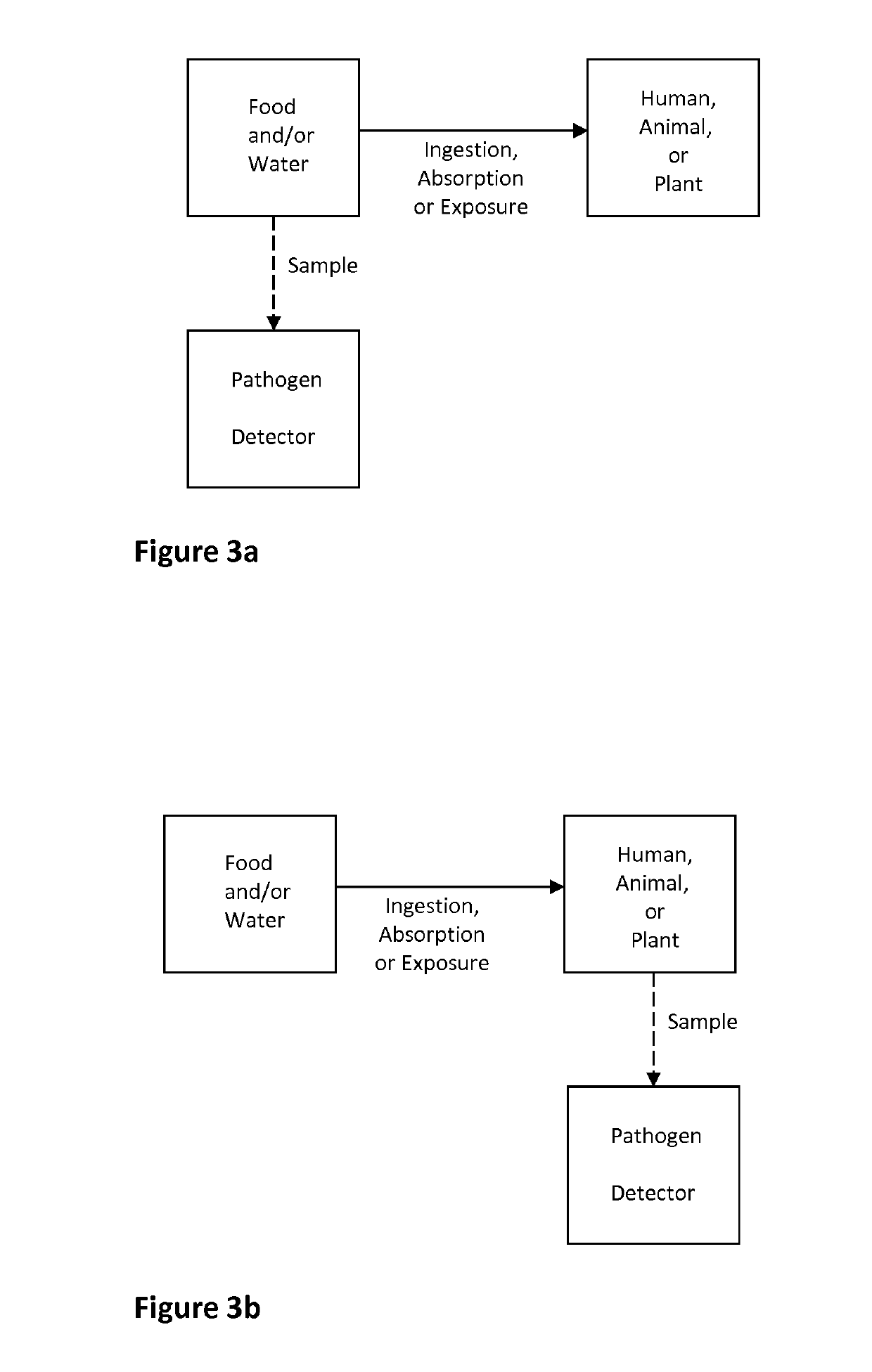High-Accuracy Statistical Detection and Discernment of Pathogens, Substances, and Biomarkers Using Binary Classifiers Operating on Processed Measurements from Groups of Less-Accurate Sensors
a statistical detection and statistical detection technology, applied in the field of miniature biochemical and chemical detectors, can solve the problems of increasing costs, affecting the quality of life of people, increasing throughput, logistical and economic barriers,
- Summary
- Abstract
- Description
- Claims
- Application Information
AI Technical Summary
Benefits of technology
Problems solved by technology
Method used
Image
Examples
example antibodies
[0279 Useful in Pathogen Sensing
[0280]The range of pathogens that can be detected with antibodies, and thus potentially with antibody-based sensors, is vast and can include both toxin-producing and disease-producing types. As described earlier, by using antibodies responsive to specific pathogens, sensor technologies can be made that could be useful for diagnosis of the existence of pathogens, infections by pathogens, and the existence and stage of pathogen-invoked disease. By providing associated software for operating and analyzing the tests, the invention to be described can be used for highly selective medical diagnosis of disease.
[0281]As a first example, attention is redirected to the opening discussion food and water safety. The most dominant food and water pathogens typically encountered include S. spp., Clostridium Perfirngens, Pseudomonas spp., Bacillus Cereus, Campylobacter Jejuni, L. Monocytogenes, Salmonella spp., E. coli 0157:H7, Shigella, Norovirus, Norwalk-like virus...
example clinical
[0679 and Field Medical Applications
[0680]In an example clinical application employing the present invention, an implementation of the present invention is located in the clinic and therein is provided with a selected removable replaceable medium element. A small sample of blood, saliva, tears, urine, earwax, secretions, etc. obtained in the clinical setting is presented to an implementation of the present invention. Information produced by the sensors is processed by algorithms to produce outputs such as disease or pathogen probability and confidence levels. The invention performs measurement and analysis operations on the sample. The invention can be used in doctor's offices, testing clinics, hospitals, pharmacies, first-aid areas, ambulances, field hospitals, travelling medical situations, etc.
[0681]In an example embodiment, the sample can be provided directly to a material import port on the embodiment of the present invention. In another example embodiment, the sample can be pr...
example homeland
[0707 Security and Anti-Terrorism Applications
[0708]As described earlier, the sensor assay systems described can be used for detection of chemicals, contaminations, pathogens, toxins, and environmental biomarkers present on or in a sample obtained from the environment. Accordingly, the invention can be used for highly selective monitoring useful for a wide range of national security applications. The invention can be used for these applications in testing relevant to security concerns and matters at airport, water reservoirs, police stations, police vehicles, military bases, public health facilities, etc.
PUM
 Login to View More
Login to View More Abstract
Description
Claims
Application Information
 Login to View More
Login to View More - R&D
- Intellectual Property
- Life Sciences
- Materials
- Tech Scout
- Unparalleled Data Quality
- Higher Quality Content
- 60% Fewer Hallucinations
Browse by: Latest US Patents, China's latest patents, Technical Efficacy Thesaurus, Application Domain, Technology Topic, Popular Technical Reports.
© 2025 PatSnap. All rights reserved.Legal|Privacy policy|Modern Slavery Act Transparency Statement|Sitemap|About US| Contact US: help@patsnap.com



